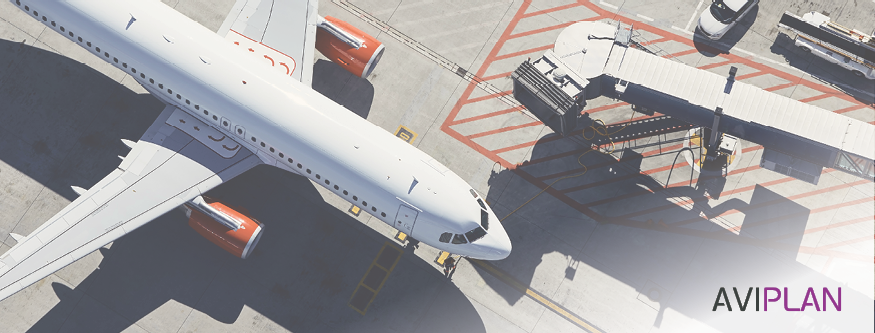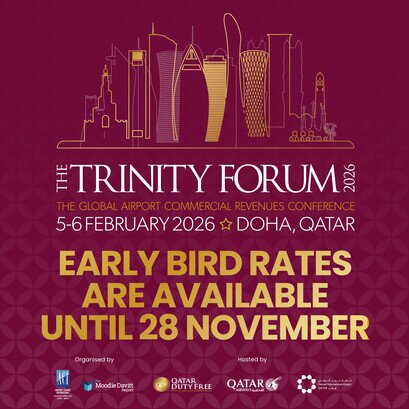Reconfiguring stand designs: How Beca maintained efficiency and safety at Auckland Airport with AviPLAN
- 2024-10-14
Transoft Solutions recently interviewed Wayne Napier, Associate Civil Engineering – Airports at Beca about how they successfully utilized AviPLAN at Auckland Airport when reconfiguring a stand design to accommodate larger aircraft. Having used AviPLAN for over several years, Napier also shared how AviPLAN’s airside infrastructure modeling and verification capabilities provide further advantages for airports and their stakeholders, which he discusses in this case study.

Client Profile
Beca is one of Asia Pacific’s largest independent advisory, design and engineering consultancies. The company has grown from a family-owned business to a progressive, client-centric professional services consultancy. Beca has more than 4,000 employees in 25 offices around the world and has delivered projects in more than 70 countries.
Client Need
Stand 10 at Auckland Airport in New Zealand was designed as a Code E max full service contact stand but a reconfiguration project was later launched to accommodate Code F aircraft. The existing fixed link would be maintained along with a new passenger boarding bridge, also referred to as an aerobridge, and this would be supplemented with a second fixed link and new bridge.
Wayne Napier, Associate Civil Engineering – Airports at Beca, comments: “The challenge was to try and get a second fixed link plus another aerobridge in the limited space available, whilst still maintaining the aircraft serviceability down to a Code C aircraft.”
The proposed Stand 10 revisions had to be modelled to assess their impact on ramp operations, ground service equipment storage, staging and access for aircraft servicing, maintenance requirements, and overall operational utility and service quality, while ensuring compliance with safety and regulatory standards.
Solution
Beca utilized Transoft Solutions’ AviPLAN* software to model the Auckland Airport Stand 10 reconfiguration. The software enabled Beca to design, and validate, different iterations to maximize the stand’s layout and operational efficiency while taking into account existing infrastructure such as fuel hydrants, floodlight towers and egress stairs on adjacent stands.
Transoft offers four AviPLAN products – from the comprehensive AviPLAN Airside Pro to AviPLAN Turn. The software suits all requirements, from busy, multi-fleet international airports that accommodate intercontinental flights to smaller regional airports.
All AviPLAN products feature an extensive library of passenger, cargo and military airplanes and helicopters, plus ground support vehicles, modeled according to manufacturer specifications. A library of passenger boarding bridges for designing contact stands is available in AviPLAN Airside and Airside Pro.
Data outputs from AviPLAN assist in spatial planning, and provide stakeholders – including airport managers/planners, ground handling staff, and airline staff – with a clear picture of any restrictions presented by a redesigned stand.
Utilizing AviPLAN for Auckland Airport Stand 10 enabled Beca to efficiently analyze the operational impacts of adapting the existing passenger boarding bridge and adding a new fixed link. The system modeled, and tested, operations from Code F down to Code C while maintaining existing operations.
The system, notes Napier, “has the ability to produce complex turnaround simulations based on the servicing arrangement in the aircraft planning manuals or self-configured variants that align with local equipment and procedures”.
AviPLAN can be used to simulate the sequenced arrival and departure of all required service vehicles, to prove that the design geometry will allow safe and timely operations.
Implementation
Beca’s Wayne Napier explains: “The development process for a project involves a lot of stakeholders. From the airport operations team to the ground services operator, all voices are heard. Everyone has a part to play in the design requirements and ultimately the project deliverable. Through a series of workshops with the stakeholders, we refined the design to include all the individual requests, making, in my mind, a robust design.”
Napier continues: “The timeline to deliver the project was lengthy, giving plenty of time for the design to be refined. With many stakeholders involved, responses to design questions can take time. Once the design is complete, a series of detailed drawings and digital files are provided to the contractor for construction. With all digital files being spatially correct in terms of a coordinate system, this makes it very easy for the contractor to establish the set out and final build requirements.”
Napier says: “It was incredibly pleasing to see the completion of the project without any additional changes having to be made during the construction period. Seeing an aircraft towed onto the stand and passenger boarding bridge and ground connections being made was incredibly satisfying. This validation of the design is reassuring that the AviPLAN product is delivering a quality and accurate output.”
Results
Napier comments: “It was amazing from my perspective how well [AviPLAN] fitted the needs of doing the design. It made our life so much easier in planning. It solved a lot of problems with being able to plan a gate and build in all that [different] geometry.”
AviPLAN modeling and verification capabilities identified the new Stand 10 would require a new lighting tower, but that no additional fuel hydrants were needed. The software “made the design so much more robust”, Napier emphasizes.
He explains: “The operational benefits derived from AviPLAN are mainly about the efficiency of the space, and safety of the environment. We were able to accommodate a new aircraft into an existing restricted operation while simultaneously improving the safety of the stand.”
AviPLAN software outputs were used to improve the ground markings across the entire airfield. “For the ramp workers, we were able to refine and accurately lay out a stand to maximize operational space, improve efficiency, and improve safety,” Napier says.
Using AviPLAN brought another tangible result. The software reduced design time for the new stand to just three or four days, down from the couple of weeks it typically took to complete a similar task using earlier-generation software.
After the Auckland Airport Stand 10 upgrade works were completed, a live trial with a Code F aircraft towed onto the stand showed the AviPLAN software outputs to be correct. “It was a major success,” Napier says.
Planning Airport Operations
AviPLAN’s airside infrastructure modeling and verification capabilities provide further advantages for airports and their stakeholders.
Its data output can be used in real time to analyze and problem-solve during airport operations, such as checking airfield compliance for unscheduled/irregular arrivals or rapidly planning workarounds for unexpected pavement maintenance. Napier cites an example from a New Zealand airport, where pilots reported concern about the clearance between their aircraft wingtip and surrounding infrastructure. “We can, within about five or ten minutes, provide a sketch to prove the design is sound and clearances are adhered to,” he says.
Overall, AviPLAN “has made gate design so much more functional”, Napier points out. The airport infrastructure design process is iterative – changes can be applied on the fly with the click of a button.
“It doesn’t take much to modify your design,” he notes. “The ability to quickly and efficiently change design to reflect stakeholders’ requirements really make AviPLAN the fantastic airside planning tool that it is.”
The software’s data outputs and verifications “are often the basis for discussions between an airport operator and other stakeholders about upcoming infrastructure projects”.
It facilitates seamless collaboration between stakeholders, and assists infrastructure maintainers with the meticulous planning required for upgrades. It helps operators balance demand and capacity for smooth operations and enables safety/regulatory standards to be met while maintaining efficiency.
From his experience working with stakeholders from operators to ground handlers, Napier says: “I’ve not had any negative comments from anyone using AviPLAN to do apron design or verification. There’s no doubt this solution is really providing an impact on operations and processes, and the quality of the service that’s provided.”
Evolution
AviPLAN is “continually evolving”, Napier notes, adding that Beca closely collaborates with Transoft to draw out further utility from the product.
Bernard Goodworth, Senior Product Manager from Transoft says: “We’re always looking at developing new functionalities.” Further opportunities include expanding the ability to work with groups of airplanes, adding support for Front-loader and T-Bridge passenger boarding bridges. Our web-based solution, AeroCENTRAL Stand Guide, can now integrate and share AviPLAN output with all operational stakeholders.
Goodworth says: “Those are the new challenges facing airports and the likes of software developers like Transoft. It’s a very exciting, dynamic world and software platform we’re working with.”

This article was provided by a third party. The views expressed in the article do not represent or reflect the views of ACI Asia-Pacific & Middle East. Inclusion of any link to other external sites does not imply endorsement by ACI Asia-Pacific & Middle East of those sites and ACI Asia-Pacific & Middle East shall not be held responsible or liable for any content, advertising, products or other materials on or available from such external resources and sites.
- CATEGORY
- COUNTRY / AREA
- Australia
- AUTHOR
- Transoft Solutions







